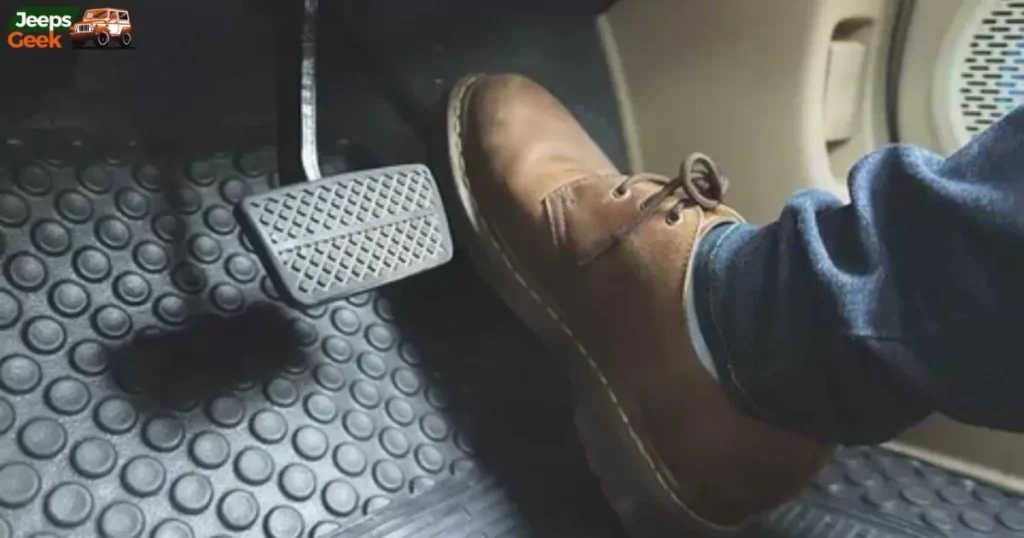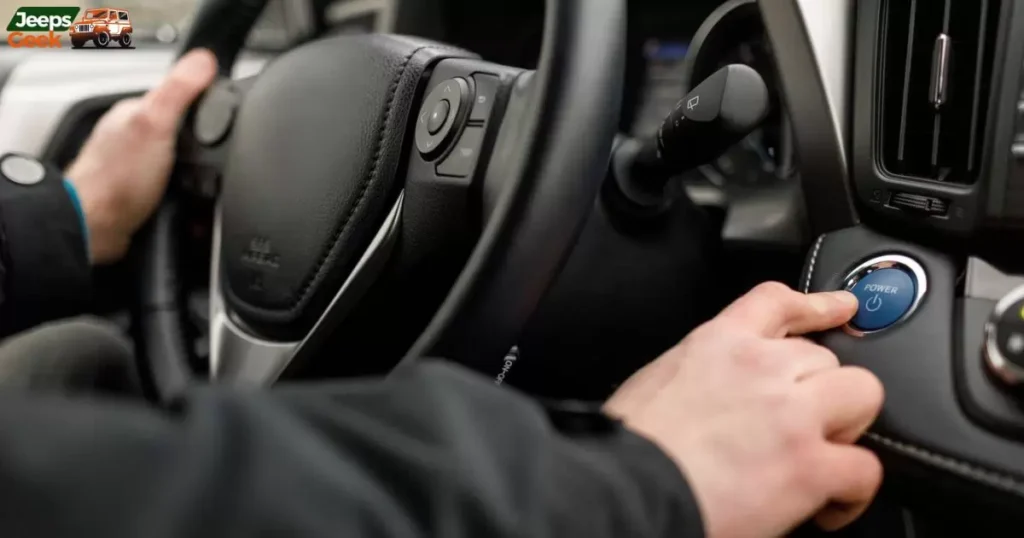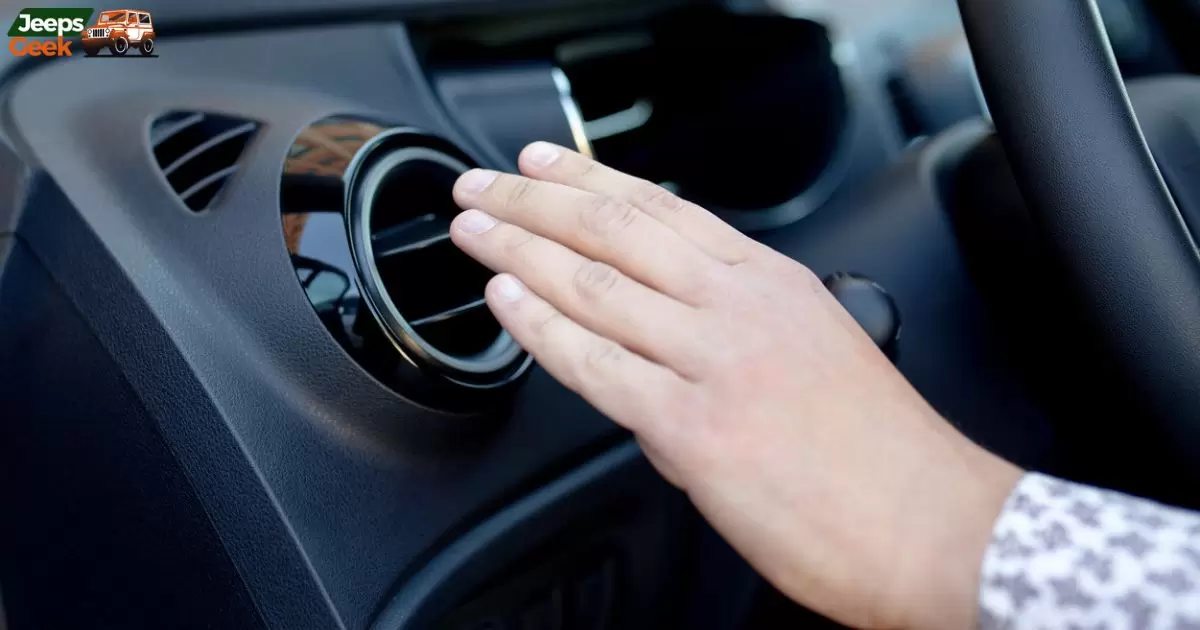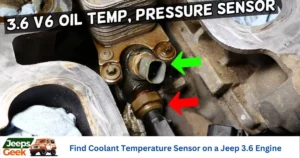Is your car showing the message ‘Stop Start Not Ready Cabin Cooling Or Heating’? Don’t worry we’ve got you covered with eight simple tips to fix this error.
Cabin cooling, or heating, refers to the system in a vehicle that regulates the temperature inside the cabin. This technology allows occupants to adjust the air conditioning or heating to ensure a comfortable environment during travel.
It plays a crucial role in enhancing the overall driving experience by maintaining an optimal temperature inside the vehicle.
Learn how to troubleshoot and get your car’s climate control back on track. Stay cool or warm on your journeys with our easy solutions to tackle the issue.
If your car says Stop, Start, Not Ready Cabin Cooling or Heating, it means there’s a problem. To fix it, check your car battery and make sure you press the brake pedal when starting the engine. Look in your car manual to find the button to stop the engine system for cabin climate control.
If the problem continues, ask a car expert for help. Follow these steps to get your car working and keep the cabin comfy.
Stop/Start technology has good points, but it also has some downsides. It might not work properly at times. One common issue is the “Stop Start, Not Ready Cabin Cooling or Heating” message on the dashboard.
This problem happens mostly when the car is trying to cool or heat the inside but hasn’t reached the right temperature yet. The Start/Stop system checks if the inside of the car is at the right temperature compared to the outside before it starts working.
Several conditions stop the Stop/Start system from turning the engine off or on again. This system waits until certain conditions are met before it works. If these conditions aren’t met, your Jeep might suddenly stop or won’t start automatically.
What is a Stop/Start System
A Stop/Start system in a vehicle is an innovative feature designed to enhance fuel efficiency and reduce emissions. When the vehicle comes to a stop, such as at a traffic light or in heavy traffic, the engine automatically shuts off temporarily to conserve fuel. Upon resuming movement, the engine restarts seamlessly.
Anyhow, issues related to the Cabin Cooling or Heating system may arise with this technology. This message indicates that the climate control system may not be ready due to the engine stopping and starting frequently. It’s crucial to address this issue to maintain a comfortable cabin environment.
It’s good for the environment. Your Jeep has some important upgrades in the engine, starter, and battery system to handle extra engine starts. Start-stop technology will be included in all new cars because the government wants cars to use less fuel with new rules. This system can save 3 to 10% of fuel for cars that don’t run on electricity, sometimes even up to 12%.
The Stop/Start system will turn on when:
- You completely stop the Jeep,
- Put the gear in drive, and
- Press the brake pedal.
The motor will stop by itself. The air from the air conditioning may not blow as strongly. Before turning off the motor, the system looks at everything. When you press the gas pedal, the motor starts again on its own.
If it’s really hot or really cold inside the car, the motor starts by itself to keep the temperature just right.
Read also: Service Electronic Stability Control Jeep Warning: 9 Tips to Fix the Issue
Reasons Behind Stop Start Not Ready Cabin Cooling or Heating Error and Their Respective Solutions

Low Refrigerant Levels:
Issue: Inadequate levels of refrigerant can hinder the cooling or heating system.
Solution: Schedule a professional inspection to identify and fix any leaks, then recharge the refrigerant.
Faulty Thermostat:
Issue: A malfunctioning thermostat may lead to inaccurate temperature control.
Solution: Replace the faulty thermostat to ensure proper regulation of cabin temperature.
Electrical System Problems:
Issue: Disruptions in the electrical system can result in a stop-start error.
Solution: Check and repair any damaged wiring or connections; ensure the battery is in good condition.
Sensor Malfunctions:
Issue: Faulty sensors can misread temperature signals, affecting the climate control system.
Solution: Diagnose and replace any malfunctioning sensors to restore accurate temperature readings.
Blocked air filters:
Issue: Clogged air filters restrict airflow, reducing the efficiency of the heating or cooling system.
Solution: Regularly replace air filters to maintain optimal system performance.
Software Glitches:
Issue: Software errors can disrupt the proper functioning of the climate control system.
Solution: Update or reinstall the software to eliminate glitches and restore normal operation.
Mechanical component failures:
Issue: Wear and tear on mechanical components can lead to system failures.
Solution: Periodic maintenance and timely replacement of worn-out parts can prevent breakdowns.
Addressing these issues promptly ensures a comfortable and reliable cabin climate control system, allowing for a seamless driving experience.
The cabin temperature that is set has yet to be reached because cooling or heating is in progress
In the meantime, take a moment to relax and enjoy the journey. The advanced climate control technology is diligently adjusting the air to meet your specifications.
The hum of the system signifies its commitment to making your travel experience as pleasant as possible. As the cooling or heating continues, you might notice subtle changes in the air around you.
Be assured that each moment brings you closer to the ideal cabin temperature you’ve selected. Your comfort is a top priority, and the system is fine-tuning itself to create an atmosphere that suits your preferences.
So, whether it’s a chilly day or a warm one, rest assured that the cabin is on its way to providing the perfect temperature for your journey.
When climate control is in full defrost mode
When the climate control system operates in full defrost mode, it plays a crucial role in maintaining a comfortable and safe environment within the cabin of a vehicle. This mode is designed to address specific needs, depending on the prevailing weather conditions.
During cold weather, the defrost mode prioritizes heating to ensure that the vehicle’s interior remains warm and cozy. This enhances the comfort of the occupants and prevents issues such as fogging or frosting on the windows, which could otherwise impair visibility.
By effectively distributing warm air throughout the cabin, the system safeguards against the discomfort and inconvenience associated with chilly temperatures.
On the other hand, in warmer conditions, the defrost mode focuses on cooling the cabin. It works to reduce the interior temperature, promoting a pleasant and refreshing atmosphere. This is particularly beneficial during hot days when maintaining a cool and comfortable environment inside the vehicle is essential for the well being of the passengers.
If you have your air conditioning set to high defrost with the fan on high, the Stop/Start system in your car won’t work. This is because this situation stops the system from working.
To fix this, lower the settings or switch off the high defrost mode.
When max A/C is enabled
When the Max A/C mode is activated in your vehicle, it optimizes the air conditioning system for rapid and efficient cabin cooling. This feature is designed to quickly lower the interior temperature, providing a refreshing and comfortable environment during hot weather.
When you engage Max A/C, the system adjusts various parameters, such as fan speed and air distribution, to maximize the cooling effect.
In colder conditions, the Max A/C mode may transform into Max Heat, ensuring swift and effective cabin heating. This is particularly useful during chilly mornings or in cold climates, as it helps warm up the interior promptly.
The system works by directing heated air to the passenger compartment, enhancing comfort for occupants.
Faulty climate control system
If the climate control system in your car doesn’t work right, it won’t set the inside temperature correctly. Then, a message will show up on your screen to warn you.
Your car’s climate control might stop working for a few reasons. First, check if any fuses are broken. Next, look at your coolant level and see if it’s low or dirty. Also, check the fans to find out what’s causing the problem.
Some Other Issues that Might be Causing the Particular Problem
In some cases, electrical issues such as faulty sensors or wiring problems may also contribute to cooling or heating issues. Conducting a thorough diagnostic of the electrical components and addressing any issues can help in resolving the problem and restoring optimal cabin comfort.
Here’s a simple table outlining the “Some Other Issues” that might be causing cabin cooling or heating problems:
| Issue | Description |
| Cabin Air Filter | Clogged or dirty air filters can impede airflow. |
| Blower Motor | A malfunctioning blower motor affects air circulation. |
| Electrical Problems | Issues in the electrical system can disrupt climate control. |
Problem with the battery or charging
Issues with the battery or charging can significantly impact the efficiency of a vehicle’s cabin cooling or heating system.
When a car’s battery is not functioning optimally, it may struggle to power the various components responsible for regulating the interior temperature.
This can result in inadequate heating during cold weather or insufficient cooling on hot days.
Also, a faulty battery or charging system can affect the performance of auxiliary features like air conditioning and heating, making it uncomfortable for passengers.
In electric vehicles (EVs), where the battery is the primary power source, a compromised battery or charging mechanism can be especially problematic.
Regular maintenance and prompt resolution of battery or charging issues are essential to ensure the proper functioning of the cabin climate control system.
Vehicle owners should be attentive to warning signs such as slow charging, inconsistent power delivery, or dashboard alerts related to the battery.
Addressing these concerns promptly through professional inspection and repairs will contribute to a more comfortable and reliable driving experience, regardless of the external temperature conditions.
If your battery isn’t working well, it can cause a lot of problems. Here are some things to do when checking your battery:
- Check if the battery is placed correctly.
- Make sure the wires are connected tightly by twisting them.
- See if the battery ends are clean and not covered in dirt or rust. Dirty ends can make a bad connection.
- Test how much charge the battery has when the engine is on and off.
- Test the battery’s power if it seems okay but isn’t charging.
- If the battery shows it doesn’t have enough power, it needs to be replaced.
Downgraded/Broken sensors

When the sensors responsible for regulating cabin temperature in a vehicle malfunction or break down, it can lead to a frustrating and uncomfortable experience for passengers. These sensors play a crucial role in maintaining an optimal climate within the cabin by controlling the heating or cooling systems. A malfunctioning sensor may inaccurately measure the interior temperature, causing the climate control system to operate inefficiently.
In some cases, it could result in inadequate heating during cold weather or insufficient cooling in hot conditions. The impact of downgraded or broken sensors extends beyond mere discomfort, it can also affect the overall driving experience.
Unwanted temperature variations may distract the driver and compromise their focus on the road, posing a potential safety risk.
Your car’s Stop/Start system needs information from various sensors to work properly. If these sensors give wrong information, the system might not turn on.
To make sure your sensors are working correctly, look at the information they give using a scanner tool. You can test the cabin temperature sensor using a multimeter. Then, test the engine temperature sensor.
If you can, test all the other sensors in your car the same way. If they’re all working fine, the issue might be with the Stop/Start system or the engine.
Malfunctioning ECU
A malfunctioning Engine Control Unit (ECU) can lead to issues with cabin cooling or heating in your vehicle. The ECU plays a crucial role in managing various components of the engine, including the systems responsible for regulating the temperature inside the cabin.
When the ECU malfunctions, it may disrupt the proper functioning of the heating and cooling mechanisms.
In cold weather, a faulty ECU may fail to engage the heating system, leaving you shivering in the chilly cabin. Conversely, during hot weather, a malfunctioning ECU might prevent the air conditioning from operating effectively, resulting in an uncomfortably warm interior.
These issues not only compromise your comfort but also impact your safety by distracting you from driving.
Engine problems
Engine problems related to cabin cooling or heating can be a source of discomfort and inconvenience for vehicle owners. The cabin cooling and heating systems rely on the proper functioning of the engine to regulate temperature and ensure a comfortable driving experience.
When engine problems occur, it can directly impact these systems, leading to inadequate cooling or heating inside the vehicle.
Engine overheating is another critical factor that can affect cabin temperature. When the engine runs too hot, it can compromise the effectiveness of the cooling system, resulting in insufficient heat dissipation.
This can lead to discomfort for passengers, especially in extreme weather conditions. Addressing engine problems promptly is crucial to maintaining a comfortable cabin environment.
Finally, problems with the engine might stop the Stop/Start system in your car from working. Check if your engine has any of these issues:
- Getting too hot
- Leaking
- Problems starting the engine
- Parts that are old and not working well
If you notice a yellow symbol when your car is stopped, it means there’s a problem that might need help from a dealer.
How do You Turn off the Stop/Start System

If you’re looking to disable the Stop/Start system in your vehicle, the process is usually straightforward. Most cars equipped with this feature have a dedicated button or menu option on the dashboard or center console.
Locate the button that resembles an A with a circular arrow around it, as it is commonly used to control the auto start/stop function.
To turn off the Stop/Start system for cabin climate control, press the designated button until the indicator light turns off or the corresponding icon on the display disappears. This action effectively deactivates the system, allowing your vehicle’s engine to run continuously while the heating or cooling system operates.
Keep in mind that disabling the Stop/Start system for cabin climate control may result in a slight decrease in fuel efficiency, as the engine will no longer automatically shut off when the vehicle is stationary.
Remember to consult your vehicle’s owner’s manual for specific instructions related to your car model, as the location and design of the button may vary among different manufacturers and models.
Pros and Cons of Resolving ‘Stop Start Not Ready Cabin Cooling or Heating’ Error
- Pros: Efficient resolution ensures proper functioning of the climate control system, enhancing comfort and usability.
- Cons: This may require professional intervention or diagnostics, potentially incurring service costs or vehicle downtime.
- Impact: Resolving the error improves driving experience, yet the process might involve expenses and inconvenience.
Answer to key question
How does a cabin heater work?
Cabin heaters use coolant from the engine to warm air blown into the car.
How do I activate the start-stop engine?
Start-stop engines activate automatically when the car stops and the brake is pressed, restarting when the brake is released.
How do I know if my start-stop battery is bad?
A bad start-stop battery may show warning lights, cause starting issues, or trigger error messages.
Does stop-start affect the battery?
Stop-start systems can slightly affect a car battery’s lifespan due to increased cycles.
How long does a start stop starter last?
The lifespan of a start stop starter varies but can typically last around 100,000 starts.
Conclusion
If you find your Stop Start Not Ready Cabin Cooling Or Heating, affecting cabin climate, follow these eight simple tips. Firstly, check for a low battery, ensuring it has sufficient charge. Next, ensure the brake pedal is pressed firmly when attempting to start the engine.
If the error persists, review your vehicle’s owner’s manual to locate the specific button or menu option to disable the Stop/Start system for cabin climate control.
By applying these troubleshooting tips, you can efficiently address the Stop Start Not Ready error and enjoy uninterrupted cabin comfort. Always refer to your vehicle’s manual for precise instructions tailored to your car model.
With these steps, you’ll be well on your way to resolving the issue and ensuring a smoother driving experience.

I’m Matthew Porter, crafting Jeep expeditions at “Jeeps Geek.” Drawing on my hands-on experience and love for all things Jeep, I’m here to guide you through modifications, resolve issues, and share the joy of being a Jeep geek.













